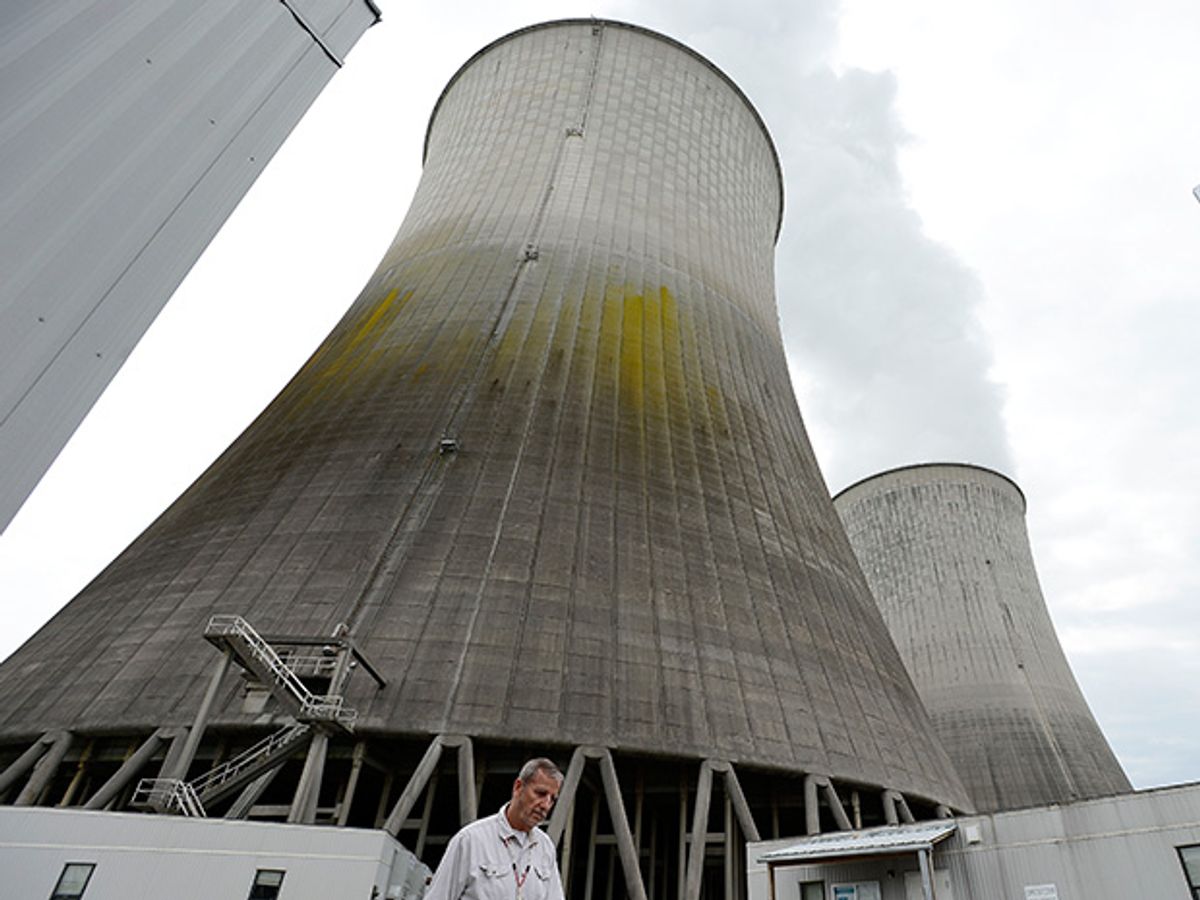Yesterday, U.S. federal regulators approved an operating license for Unit 2 of Tennessee Valley Authority's Watts Bar nuclear power plant; it's only taken 19 years and almost 4.5 billion dollars. The Gen II plant should be producing power by the end of the year, and it shouldn’t bother you in the least that we mostly stopped building Gen II reactors sometime in the mid ‘90s.
The Tennessee Valley Authority (TVA) began construction on two pressurized water reactors (PWRs) in 1973. Unit 1 was completed in 1996, while construction on Unit 2 was halted in 1988 when it was 80 percent complete due to a reduction in the predicted growth of power demand. TVA resumed work on Unit 2 in 2007, and it’s now gotten approval to load nuclear fuel into Unit 2 and to begin testing. The goal is to generate 1,180 megawatts of power by the end of this year.
Unit 2 (and the currently operational Unit 1) are both Gen II four-loop pressurized water reactors, built by Westinghouse. Generally, Gen II reactors are distinct from more modern Gen III reactors in that Gen III offers improved safety, increased efficiency, and simpler, more reliable designs. For example, four reactors based on the more modern Gen III design, known as AP1000, are currently being built in the U.S. Compared to a Westinghouse Gen II PWR, the AP1000 contains 50 percent fewer safety-related valves, 35 percent fewer pumps, 80 percent less safety-related piping, 85 percent less control cabling, and 45 percent less seismic building volume.
That's a lot less to break down. And when the newer generation’s passive advanced safety features are taken into consideration, the AP1000 reactors should be about 100 times as safe as existing plants. If an accident happens, the AP1000 will shut itself down without needing any human intervention (or even electrical power) within the first 72 hours. What’s more, only a small amount of water transfer (about ten garden hoses worth) is necessary after that to keep the reactor stable.

We certainly don't mean to suggest that Watts Bar 2, a Gen II pressurized water reactor, is unsafe or anything. Pressurized water reactors have passive safety systems of their own, including control rods held in place by electromagnets so that if power is lost, gravity will cause the reactor to shut itself down—although the pumps that transfer coolant in and out of the core require electrical power to work, so in the event of a blackout, the plant is reliant on generators to keep it cool. Our point here is simply that this “new” reactor is based on a quarter-century-old design, and that nuclear power has gotten orders of magnitude safer since then.
There are strong arguments that, overall, nuclear power is far safer than coal, although as recent accidents have shown, there's still significant room for improvement in reactor designs. And improvements are certainly being made: Gen IV reactors are hundreds of times more efficient in their use of fuel, produce waste that is safe after tens of years (instead of thousands), and are even safer. However, we're hoping that by the time Gen IV reactors are ready for construction (sometime in the 2030s), fusion power will have completely taken over electric power generation.
Evan Ackerman is a senior editor at IEEE Spectrum. Since 2007, he has written over 6,000 articles on robotics and technology. He has a degree in Martian geology and is excellent at playing bagpipes.



